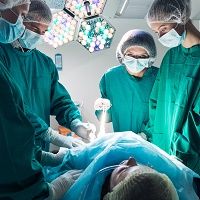Article
Revising Roux-en-Y Gastric Bypass Procedures
Author(s):
Roux-en-Y gastric bypass (RYGB) is a common bariatric procedure.

Roux-en-Y gastric bypass (RYGB) is a common bariatric procedure.
Some gastric patients develop early complications — bleeding, infection, anastomotic leak, thromboembolic disease, and cardiopulmonary difficulties – that rarely require surgical revision.
However, late complications like marginal ulcers, dumping syndrome, hiatal hernias, malnutrition, refractory hypoglycemia, nesidioblastosis (acquired hyperinsulinism with beta cell hyperplasia), and hypocalcemia are a different sort of problem.
When they cannot be resolved, the complications become life threatening. Affected patients will need a second operation and reversal of the Roux en Y gastric bypass.
The journal Obesity Surgery has published a study that looks at indications for and outcomes after gastric bypass reversal. It provides a first glimpse of how patients fare after reversal.
This multicenter retrospective study enrolled 50 patients who underwent reversal of RYGB in a six-year period (2006 to 2015). Patients were predominately female (86%) and averaged 40 years of age.
The most common indication for reversal was anastomotic ulcers (n = 27) followed by functional disorder (n = 12) . Nine patients had anastomotic complications (and two were malnourished. Patients’ mean BMI was 29 ± 9.4 kg/m2 before the reversal, and on average, the reversal was done about five years after the original surgery.
Most of the reversals were done by open procedure, with 14 were done laparoscopically. Patients tended to have hospitals stays of about eight days, and no patients died within 30 days.
Gastric bypass reversal successful resolved ulcers for 92.6 % of affected patients. Among patients with anatomic complications, 78% found relief after the procedure. Both malnourished patients recovered their ability to absorb nutrients, and eight of the 12 patients with functional disorders improved.
The researchers note that gastric bypass surgery often taxes surgeons, as patients may present with little workup and at inconvenient times. They attempted to preserve maximum vascularity of the gastric remnant — a challenge because many remnants have minimal vascularity and scar tissue. They conclude that gastric bypass reversal is safe when necessary and laparoscopic approaches are possible for carefully selected patients.




